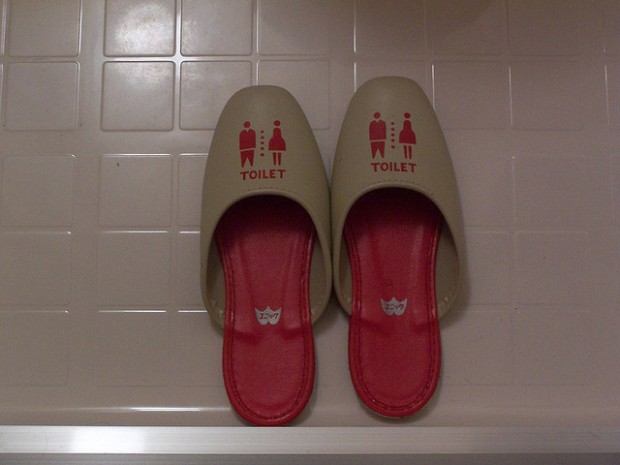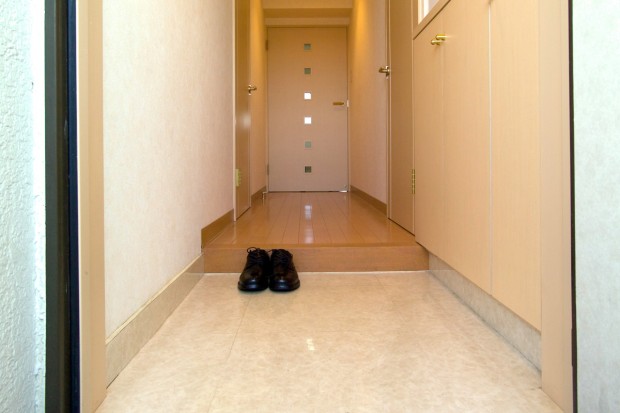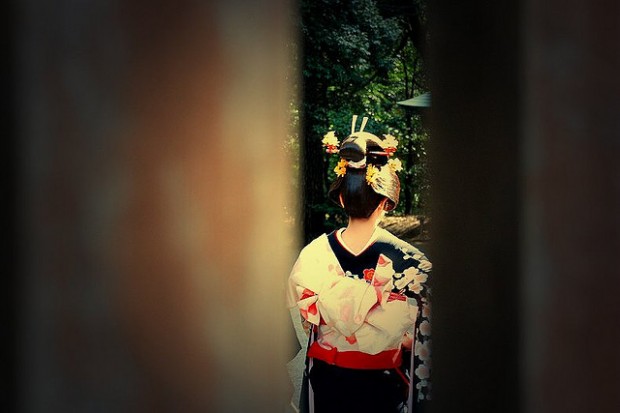Although the world is moving closer together and guidebooks cover everything from manners to bus timetables, there is still a lot to learn. As Japan and its customs still remain an enigma to many, we seem to be naturally drawn to the country. I was fortunate enough to spend a longer period of time in Japan, while also living with a Japanese family. Perhaps I should add that I was nowhere close to being fluent on my arrival. Here are 5 things I learned the hard way, living in Japan.
Also read: 10 Things That Are Rude to a Japanese But Not to You
1. Toilet slippers
 Image credit: Photocapy
Image credit: Photocapy
You might have heard stories about Japanese toilets, splashing water and the sound of birds via remote controls. It isn’t so far from the truth, as most restaurants and homes have such lavatory facilities. Many travellers are often afraid of pressing any of the buttons – but let me tell you that the biggest of them all is the only one you really need. It’s no rocket science.
However, there is another aspect of the toilet that isn’t commonly known and mostly applies to Japanese homes. When entering a Japanese house, you will be presented with slippers. But there will be another pair of slippers for the bathroom only (mostly positioned right in front of the toilet door). Please don’t make the mistake and forget to change back from your bathroom slippers into the normal ones. Japanese make a big distinction between the toilet and the rest of the house. Just imagine you start spreading the ‘toilet’ all over the house – as I did.
2. The inside and the outside
 Image credit: Fg2
Image credit: Fg2
Similarly to the distinction between the house and the toilet, the Japanese differentiate between the outside and the inside. Every Japanese house will have something called a ‘genkan’, which is sort of the welcome area of the house. It basically divides the outside and the inside. You will enter the genkan with your shoes, take them off and put the provided slippers on. However, you are not supposed to touch the ground with your feet. Depending on your shoes and backs, this can prove to be a tricky manoeuvre. Take it easy and slow, if your balance isn’t one of your best skills. You don’t want to be falling all over the genkan.
To take it a step further, you are also supposed to be saying ‘ojamashimasu’ (I will disturb you) as you cross over from the genkan to the house. It is an expression of politeness when visiting someone’s house.
The entrance area is however not only for your shoes, but for all the things that (sort of) divide outside and inside, such as coat, gloves, umbrella and the like. So don’t run off into the living room with your coat on.
3. Taking pictures of people
 Image credit: J3SSL33
Image credit: J3SSL33
The Japanese are stereotypically known to take a million pictures of everything. To be fair though, most travellers do exactly the same when in Japan. You even might be asked by a Japanese to take a picture together. You can do the same, but don’t forget to ask. While most of the time you won’t encounter a problem, you can run into difficulties, taking pictures of people without their permission.
Picture the following situation: you sit at the counter in a sushi restaurant, seeing first hand the work of the sushi chef. While snapping a quick picture will not be an issue, documenting his work with continuous clicks might upset the chef. Certain sushi chef can develop quite a temper, if they feel that their work is disrespected. Hence, it will not hurt to ask the person you are taking a picture of for permission.
Also read: 13 Experiences Every Traveller Must Have in Japan
4. Literal translations
 Image credit: Klimkin
Image credit: Klimkin
Already before my arrival I had tried my best to pick up the very basics of Japanese, which I recommend to anyone who will stay longer than a few weeks. After a month or so, I was able to have basic conversations with the people around me – surely I was still making plenty of mistakes. However, the Japanese will in general appreciate every effort that a foreigner makes to speak their language.
One mistake I continuously made (although forgiven by the family I lived with) was the literal translation of ‘okay’ – ‘daijoubu’. The word can also mean ‘don’t worry’ or ‘no problem’. I had used daijoubu as a reply for when I was asked, for example, “Whether I would like to eat (or anything else for that matter)?” I thought that I answered “I am okay, thank you.” However, in this context it would translate into something like “whatever, don’t bother”. It goes without explaining that I had been quite rude. Luckily, someone eventually explained it to me.
5. Laughing at my father-in-law
My reason to visit Japan was my Japanese girlfriend at the time. Being excited to meet her family, I was asked by a friend (only a week before going) how I will address my in-laws – will I bow, shake hands or hug them. I had no clue. I didn’t want to be disrespectful, but I also wanted to show warmth. In the end the matter was quickly decided by the parents, as I had no chance to react but use the formal Japanese way.
Everything went perfectly well until my girlfriend and I had decided to call it a night and go to sleep. At that point I had already drunk two beers with her father and thought I made it. Leaving the table, he told me that the guestroom was already prepared for me. Without thinking I laughed at him, said ‘good night’ and went to my girlfriend’s room. Only weeks later, my girlfriend told me that he actually wasn’t joking, and was slightly upset the next day. In this case, my ignorance luckily paid off. The guestroom was never an issue again.





